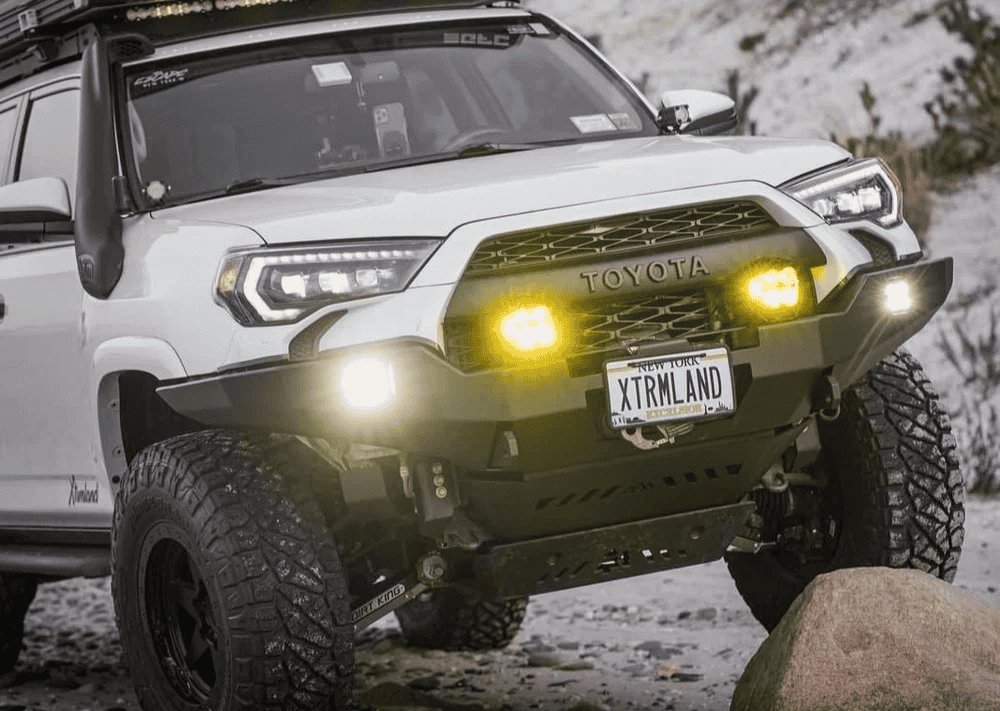Overland Vehicles

A 4x4 truck camper blends traction, ground clearance, and a compact living space that rides in or on a pickup bed. The goal is simple, reach remote trailheads without surrendering comfort. Campers fall into two broad styles, pop up shells and hard side units. Pop up designs keep a low profile on the highway and in the trees, then expand at camp for headroom and airflow. Hard side models stay tall all the time, which can help with insulation and storage but raises the center of gravity and wind load.
Fitment begins with bed length and payload. Half ton trucks often need lighter campers, while three quarter ton and one ton platforms carry more water, batteries, and gear without strain. Center of gravity matters as much as total weight. A well balanced camper sits forward over the axle and uses frame mounted tie downs to stay planted on washboard roads. Keep an eye on approach, departure, and breakover angles once the camper and gear are loaded. Avoid overhang that drags on ledges or deep ruts.
Trail travel shakes everything, so the build should favor simple and secure. Cabinetry with positive latches, reinforced mounting points, and sealed electrical connections reduce rattles and failures. Suspension upgrades can help, but start with the correct spring rate before adding shocks, airbags, or helper springs. Tire choice is another big lever. A true all terrain with a robust sidewall in an appropriate load rating handles rocks and corrugations better than a street tire with a highway tread.
Power systems in off grid campers revolve around lithium batteries, solar, and a DC to DC charger from the alternator. Size the battery in amp hours to match your draw from a fridge, roof fans, lights, and an inverter for light duty AC loads. Solar harvest extends time between drives, while a shore charger tops up at a base camp or storage. For heat, many trail focused campers rely on diesel air heaters or compact propane furnaces. Cooking can be propane, diesel, or induction paired with a healthy battery bank.
Water is weight, so be honest about your needs. A modest tank with a strainer and filter covers drinking, cooking, and rinsing for days if you manage it well. Some campers add a rear shower port to rinse bikes and gear. For the toilet, cassette and composting units are common, both with tradeoffs in maintenance and space. Ventilation keeps moisture in check, so plan for a roof fan and screened windows that still close tight in a storm.
Start by checking the door sticker for payload and axle ratings. Subtract passengers, fuel, and gear from that number to find your real camper allowance. The safest setups keep heavy items low and forward. Use frame mounted tie downs and quality turnbuckles with safety cables. After the first shake down trip, retorque mounts, check fasteners, and inspect wiring strain relief.
Think in daily budgets. Estimate amp hours, liters of water, and heating run time for your season and elevation. Right sizing beats oversizing because extra weight reduces range and traction. Keep redundancy simple, like a backup water container and a second ignition source for the stove.
Forest roads with embedded rock reward a low roof and slim width. Long sand tracks call for lower pressure and a lighter cabin. Alpine passes bring wind and cold, so insulation and a reliable heater matter more than a giant pantry. The right off road truck camper is the one that matches your terrain and habits without excess mass.
Pop up campers excel at stealth, aerodynamics, and tree clearance. Their soft walls must be well sealed and supported, and modern designs add insulation layers to stretch shoulder seasons. Hard side campers erase setup time and can carry larger cabinets, but they challenge stability on narrow shelf roads. A four wheel camper eagle style layout shows how a compact pop up can fit midsize trucks while keeping weight down. Among owners, the phrase fwc truck often refers to that minimalist approach where the truck stays nimble and the camper stays light.
Attachment style matters regardless of shell. Bed rail clamps are quick, but frame mounted systems spread load into the chassis on harsh tracks. Inside, go for modular storage that can be reconfigured for winter layers or summer river gear. Keep tools accessible, carry a proper jack, traction boards, and a tire repair kit that matches your tire load rating.
OZK Customs notes If you want a professional plan for suspension, electrical, and interior mounting that respects payload and center of gravity, explore our Overland rigs by OZK. We blueprint builds for the terrain you actually drive, not just the parking lot. For tailored systems and materials that hold up to vibration and weather, our custom overland upfit process aligns components with your truck’s capacity and your travel rhythm. Curious how we work and what to expect at handoff, read why choose OZK Customs.
You now know how to evaluate weight, mounting, systems, and real trail tradeoffs across 4x4 truck campers. When you are ready, we can turn those decisions into a dependable build that tracks straight on the highway and stays calm on washboard. Share your route, season, and truck details, and we will design the right mix of power, water, heat, storage, and suspension to keep you out there longer.
Ready to turn your truck into a capable off road camper with real trail manners and clean interior systems? Our team designs and builds custom overland upfits, from power and water to racks and suspension, all dialed to your truck and travel style. Tell us your routes and timeline and we will map the build, budget, and delivery date so you can drive out ready for dirt.
ADDRESS:
6159 E Huntsville Rd, Fayetteville, AR 72701
PHONE:
(479) 326-9200
EMAIL:
info@ozkvans.com